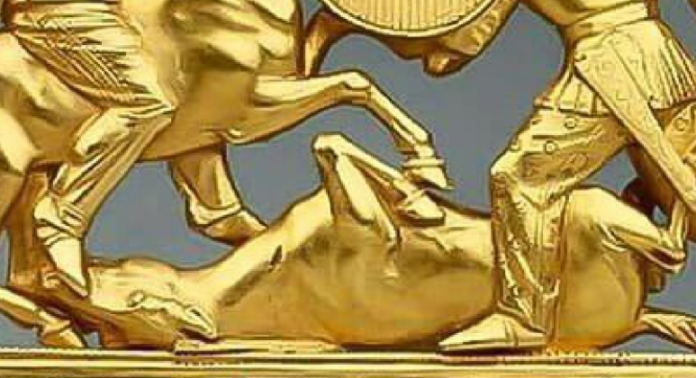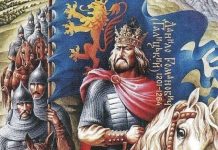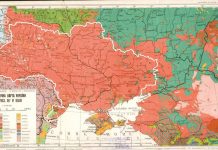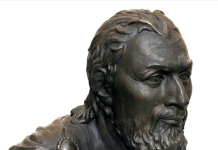As can be seen in the title image, the horserider on the Solokha comb was portrayed wearing wide trousers known also as anaxurides. The trousers were ornamented with a wide vertical stripe that was decorated with strokes of crosses. The man in the Thracian helmet opposing the horserider wears wide trousers that had the stripes of crosses on their sides too but in addition had decorative circles all over them. The third warrior approaching from the back of the horserider has trousers on him with a simpler decoration of crosses.
In this aspect, it is impossible not to mention the trousers decoration of the first warrior from the Gaimanova Mogila ceremonial cup because it stands out in the complexity of ornamentation.
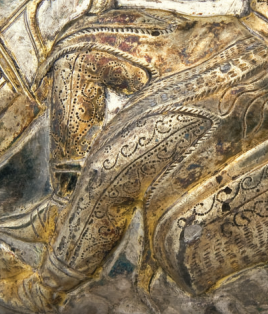
Interestingly, the archaeologists who documented the details of the Solokha warlord’s burial tell us that starting from the waist down there were 300 gold plates that decorated the trousers and kaftan of the deceased. The gold plates portrayed griffins, lions, and the Scythians. More than 130 gold plates found alongside the legs of the deceased had the same image of two Scythians drinking from one rhyton. The scholars interpret the scene as the Scythian Brotherhood Ritual described by Herodotus (4.70). Dr. A. Mantsevich conjectured that the gold plates with this scene constituted the “stripes” of the warrior’s trousers during his funeral.
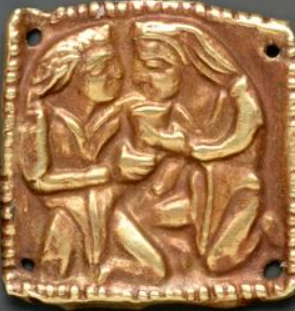
Herodotus (484 – 425 BC), a contemporary of the event, describing different units of 1 million 700 000 strong army of King Xerxes of Persia (518 – 465 BC), mentions one Scythian contingent in it: “The Scythian Sacae wore on their heads stiff turbans sticking straight up in a point. They were dressed in trousers and wielded native bows and daggers; in addition, they carried battle-axes, known as sagareis. Though these people are actually Scythians of Amyrgion, they were called Sacae because the Persians call all Scythians Sacae.” (7.64)
Scythians were probably the ones who invented trousers. Johann Beckmann (1739-1811), a German scientific author and coiner of the word “technology”, in his popular “A History of Inventions, Discoveries and Origins” wrote about trousers:
“That the Batavians, Gauls, Germans, Sarmatians, Getae, Goths, and others had such articles of clothing, is proved by many passages in ancient authors, already quoted by others, and by the well-known appellation Gallia braccata. The anaxurides also of the Persians were breeches, which the Romans adopted, not from these people, but from the northern nations, yet without the approbation of the patriots, who exclaimed against them, as they had before done against furs. At first, they seem to have been used only on journeys and in war. When the Gothic costume was forbidden by Honorius, breeches were expressly mentioned; and Ovid reproaches the people of Tomi, on the Pontus Euxinus, that though they wished to bethought of Greek extraction, they were not ashamed to wear Persian breeches.” SOLOKHA VESSEL >
The “Royal Scythia, Greece, Kyiv Rus” book has more little-known facts about Scythians and their origin.



